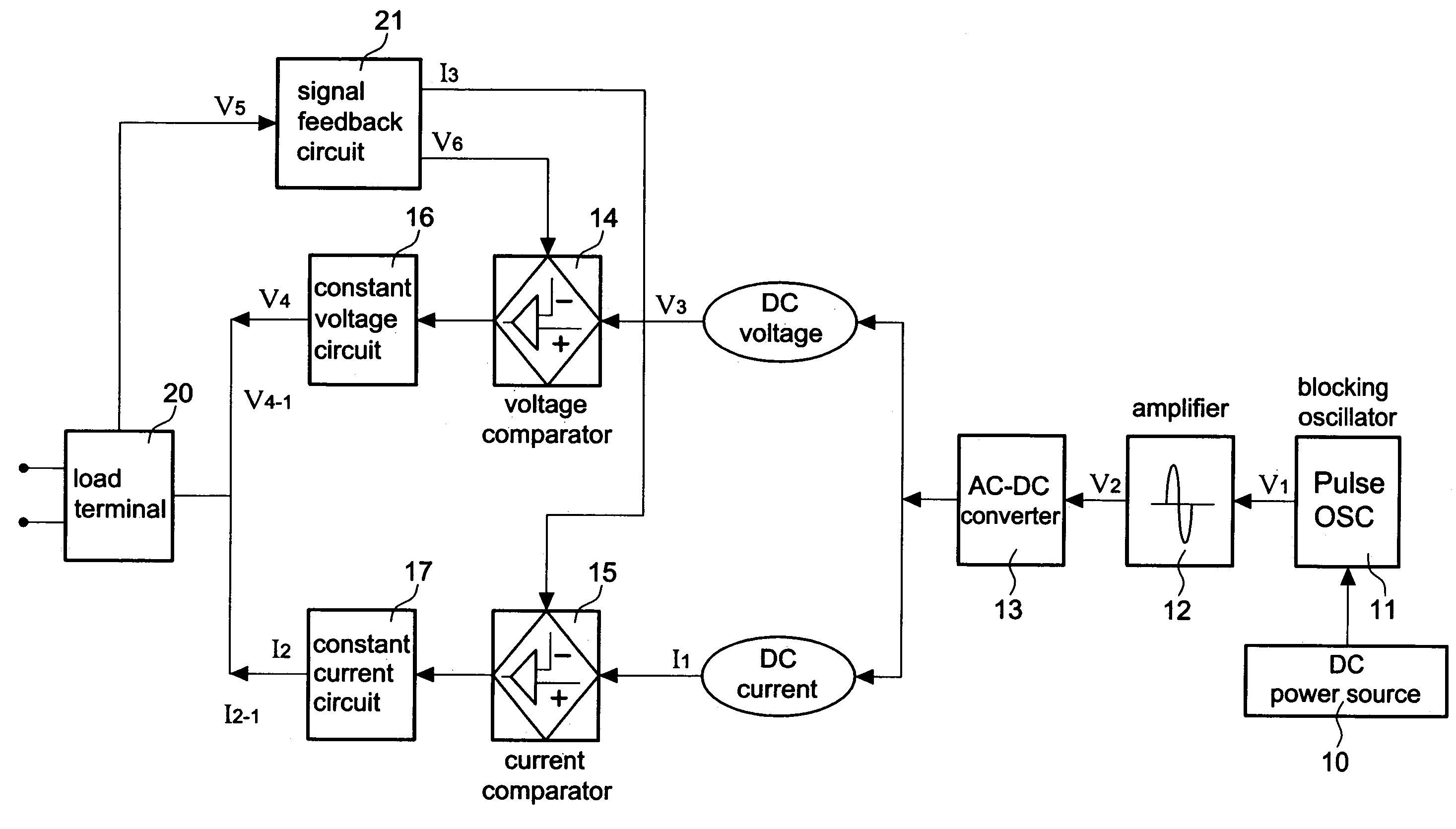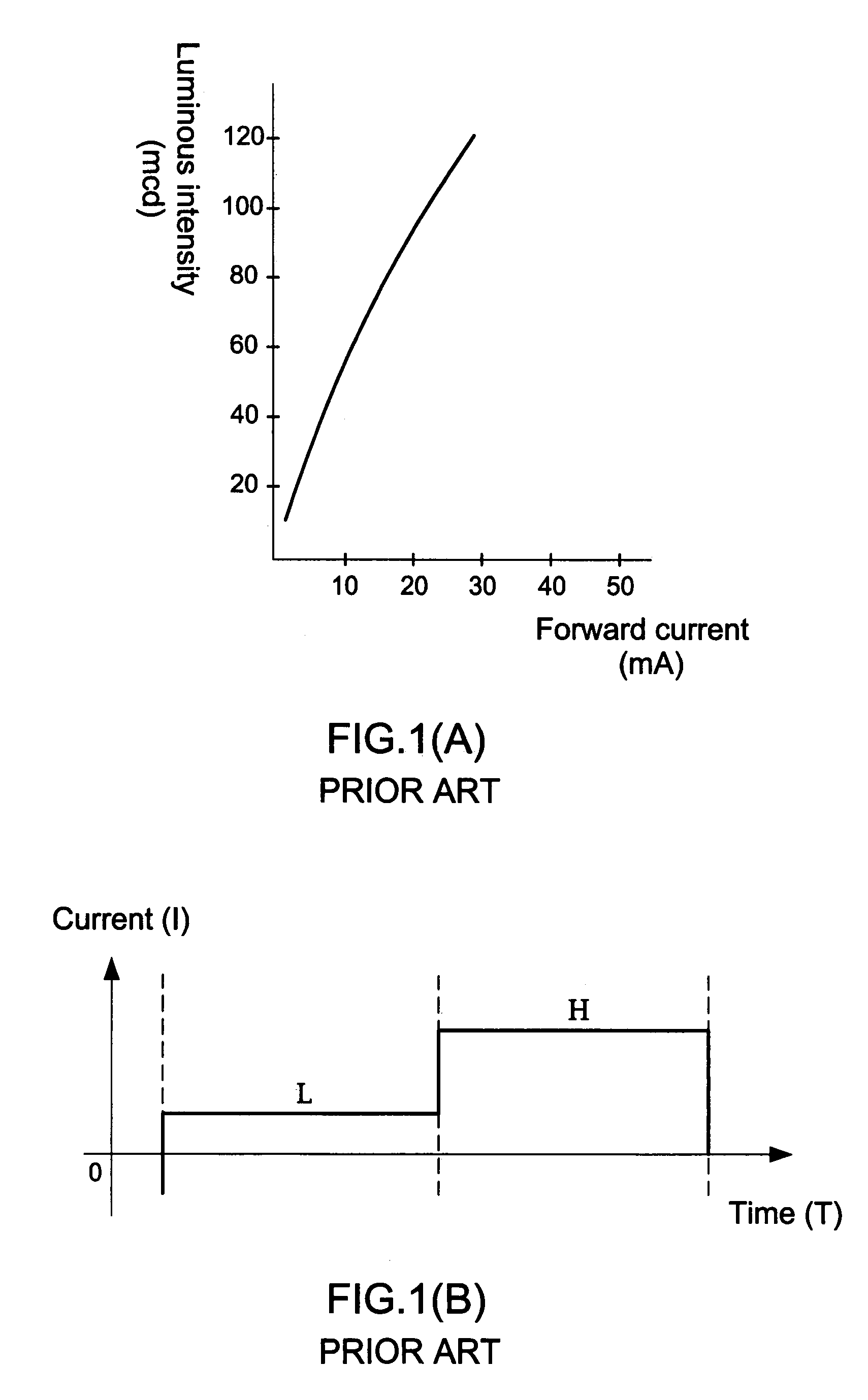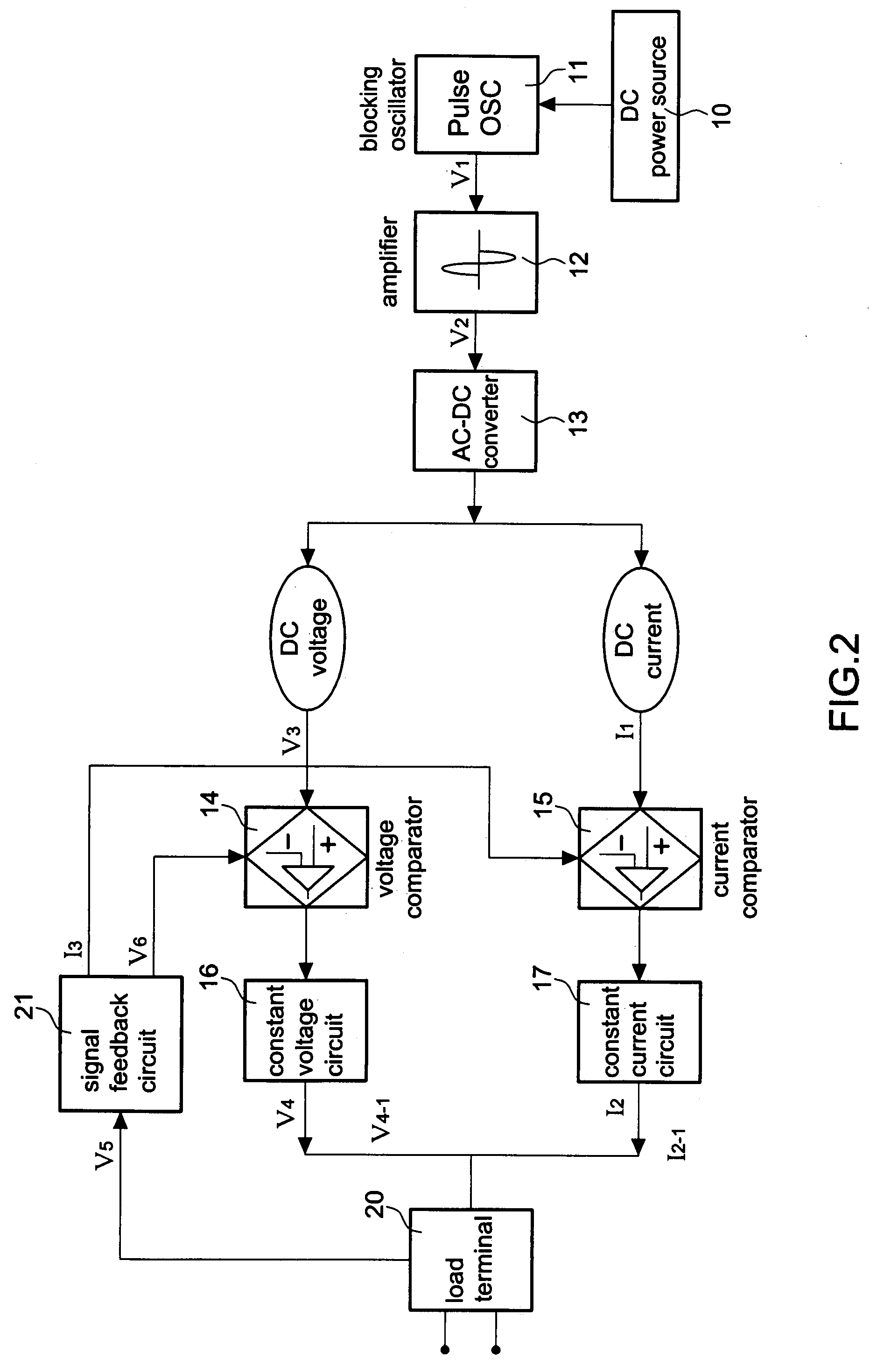Energy-saving drive apparatus for DC loads
- Summary
- Abstract
- Description
- Claims
- Application Information
AI Technical Summary
Benefits of technology
Problems solved by technology
Method used
Image
Examples
Embodiment Construction
[0016]First of all, referring to FIG. 2, an energy-saving drive apparatus in accordance with the invention includes a DC power source 10 for supplying a DC voltage to a DC load 20; a blocking oscillator 11 for converting the electric current inputted from the DC power source 10 into a pulse signal voltage V1; an amplifier 12 connected at an output terminal of the blocking oscillator 11 for amplifying the pulse signal voltage V1 so as to obtain an amplified signal voltage V2; an AC-DC-converter 13 connected at an output terminal of the amplifier 12 for converting the amplified signal voltage V2 into an initial DC voltage V3 and an initial DC current I1; a voltage comparator 14 connected at an output terminal of the AC-DC-converter 13 for comparing the inputted initial DC voltage V3 with the voltage signal at another output terminal and for supplying a constant voltage V4 to the load; a current comparator 15 connected at an output terminal of the AC-DC-converter 13 for comparing the i...
PUM
 Login to View More
Login to View More Abstract
Description
Claims
Application Information
 Login to View More
Login to View More - R&D Engineer
- R&D Manager
- IP Professional
- Industry Leading Data Capabilities
- Powerful AI technology
- Patent DNA Extraction
Browse by: Latest US Patents, China's latest patents, Technical Efficacy Thesaurus, Application Domain, Technology Topic, Popular Technical Reports.
© 2024 PatSnap. All rights reserved.Legal|Privacy policy|Modern Slavery Act Transparency Statement|Sitemap|About US| Contact US: help@patsnap.com










